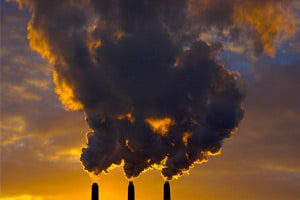
The International Agency for Research on Cancer (IARC), an arm of the World Health Organization, said data from 2010 indicate that 223,000 deaths worldwide from lung cancer resulted from air pollution, and the agency also said there is convincing evidence that air pollution increases bladder cancer risk. The risk can be similar to that of […]
 The International Agency for Research on Cancer (IARC), an arm of the World Health Organization, said data from 2010 indicate that 223,000 deaths worldwide from lung cancer resulted from air pollution, and the agency also said there is convincing evidence that air pollution increases bladder cancer risk.
The International Agency for Research on Cancer (IARC), an arm of the World Health Organization, said data from 2010 indicate that 223,000 deaths worldwide from lung cancer resulted from air pollution, and the agency also said there is convincing evidence that air pollution increases bladder cancer risk.
The risk can be similar to that of breathing in second-hand tobacco smoke, according to Kurt Straif, head of the agency’s section that ranks carcinogens, Reuters reports. The IARC evaluates specific air pollutants, and, an agency statement said, “The results from the reviewed studies point in the same direction: the risk of developing lung cancer is significantly increased in people exposed to air pollution.”
Air pollution is caused by emissions from transportation, power generation, industry and agriculture, and residential heating and cooking. Air pollution is known to raise the risk for respiratory illnesses and heart disease, Reuters notes.
The IARC has reviewed thousands of studies on air pollution tracking populations over decades and laboratory research in which mice exposed to polluted air experienced increased numbers of lung tumors. The health agency said both air pollution and “particulate matter,” one of its major components, would now be classified as Group 1 human carcinogens, Reuters reports.
Air pollution varies dramatically from one location to another and in a given location at different times, Reuters explains. But despite the differences in composition and level, the agency concludes that air pollution “is a leading environmental cause of cancer deaths,” in all regions of the world, according to Dr. Christopher Wild, IARC director. While many chemicals and mixtures in air pollution have been classified as carcinogens, this is the first time experts have classified air pollution itself as a cause of cancer. When asked why it had taken so long to reach this conclusion, Wild said one factor is the time lag—often decades—between exposure to polluted air and the onset of cancer.


